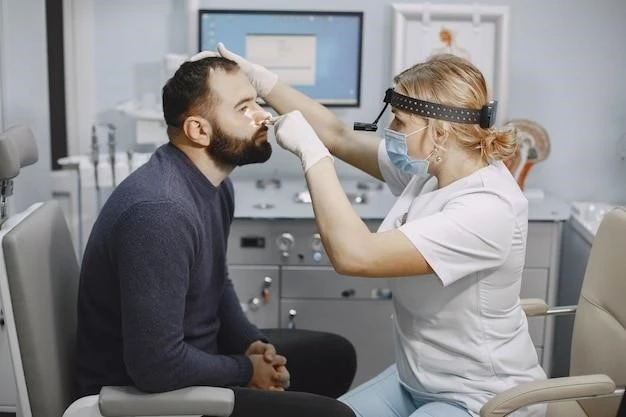Introduction to Microphthalmia
Microphthalmia is a congenital eye abnormality where one or both eyeballs are abnormally small and have anatomical malformations. The condition can arise before birth, leading to eyes that are significantly smaller than normal. It is essential to understand the causes, symptoms, and potential complications associated with microphthalmia.
Definition and Overview
Microphthalmia is a congenital eye abnormality where one or both eyeballs are abnormally small and have anatomical malformations; The condition can arise before birth, leading to eyes that are significantly smaller than normal. It is essential to understand the causes, symptoms, and potential complications associated with microphthalmia. It is important to differentiate between microphthalmia and anophthalmia to provide appropriate care and management for affected individuals. Continued research and understanding of microphthalmia are crucial for improving diagnosis and treatment outcomes.
Causes of Microphthalmia
Microphthalmia can result from various genetic factors and environmental influences. Understanding the interplay between genetic predisposition and external factors is crucial in comprehending the development of this congenital eye abnormality;
Genetic Factors
Microphthalmia can be influenced by various genetic factors, including chromosomal abnormalities and mutations that impact eye development. Understanding the genetic basis of microphthalmia is crucial for early detection, personalized treatment approaches, and genetic counseling for individuals and families affected by this condition.
Environmental Influences
Microphthalmia can be influenced by various environmental factors during pregnancy, such as maternal infections, exposure to toxins, and certain medications. Understanding how environmental factors contribute to the development of microphthalmia is essential for preventative measures and optimizing maternal health during pregnancy.
Symptoms and Diagnosis
Microphthalmia may present with small or missing eyeballs, anatomical abnormalities, vision impairment, and associated health issues. Diagnosis involves thorough eye examinations, imaging tests, and genetic evaluations to determine the extent of the condition and plan appropriate treatment strategies.
Common Signs of Microphthalmia
Microphthalmia typically presents with small or missing eyeballs, visual impairments, and anatomical abnormalities in the eye structure. These signs may vary in severity and can impact vision and overall eye health. Early recognition of these common signs is vital for timely diagnosis and appropriate intervention strategies.
Diagnostic Procedures
Diagnosing microphthalmia involves a comprehensive evaluation that may include eye examinations, imaging tests like ultrasound or MRI, genetic testing, and consultation with ophthalmologists and genetic specialists. These diagnostic procedures help determine the extent of the condition, associated abnormalities, and guide personalized treatment plans for individuals with microphthalmia.

Treatment Options
Various treatment options for microphthalmia include surgical interventions, prosthetic devices, visual aids, and supportive therapies. The choice of treatment depends on the severity of the condition and individual needs to optimize visual function and enhance quality of life.
Medical Interventions
Treatment for microphthalmia may involve surgical procedures to correct eye abnormalities, prosthetic devices to improve the appearance of the eye, and visual aids to enhance visual function. The goal of medical interventions is to optimize visual outcomes and address any associated health issues related to microphthalmia.
Supportive Therapies
Supportive therapies for microphthalmia may include visual aids, occupational therapy, and counseling to address emotional and practical challenges associated with vision impairment. These therapies aim to enhance the quality of life, promote independence, and provide holistic care for individuals living with microphthalmia.

Prognosis and Complications
Understanding the potential long-term outcomes and associated health issues of microphthalmia is crucial for providing appropriate care and support. Early diagnosis and intervention can help mitigate complications and improve the overall prognosis for individuals with this condition.
Potential Long-Term Outcomes
Due to the complexity of microphthalmia, individuals may face long-term challenges related to vision, eye health, and overall well-being. Understanding the potential outcomes and complications associated with microphthalmia is essential for providing comprehensive care and support to affected individuals throughout their lives.
Associated Health Issues
Individuals with microphthalmia may experience associated health issues such as vision impairment, depth perception difficulties, and increased risk of eye infections. Addressing these health concerns through regular eye examinations, vision therapies, and appropriate interventions can help manage the complications associated with microphthalmia effectively.
Prevention Strategies
Prevention of microphthalmia involves genetic counseling to assess the risk of inherited conditions, preconception care to optimize maternal health before pregnancy, and avoidance of environmental factors known to impact fetal development. Implementing proactive strategies can help reduce the incidence of microphthalmia and improve overall maternal and child health.
Genetic Counseling
Genetic counseling plays a crucial role in assessing the risk of inherited conditions like microphthalmia. It involves understanding familial patterns of the condition, discussing potential genetic testing options, and providing information on the likelihood of passing the condition to future generations. Genetic counseling helps individuals make informed decisions regarding family planning and managing the genetic aspects of microphthalmia.
Preconception Care
Preconception care plays a vital role in optimizing maternal health before pregnancy to reduce the risk of congenital conditions like microphthalmia. It involves healthy lifestyle choices, managing underlying health conditions, and genetic counseling to minimize the chances of developmental abnormalities in the unborn child. Taking proactive steps towards preconception care can positively impact the overall well-being of both the mother and the baby.
